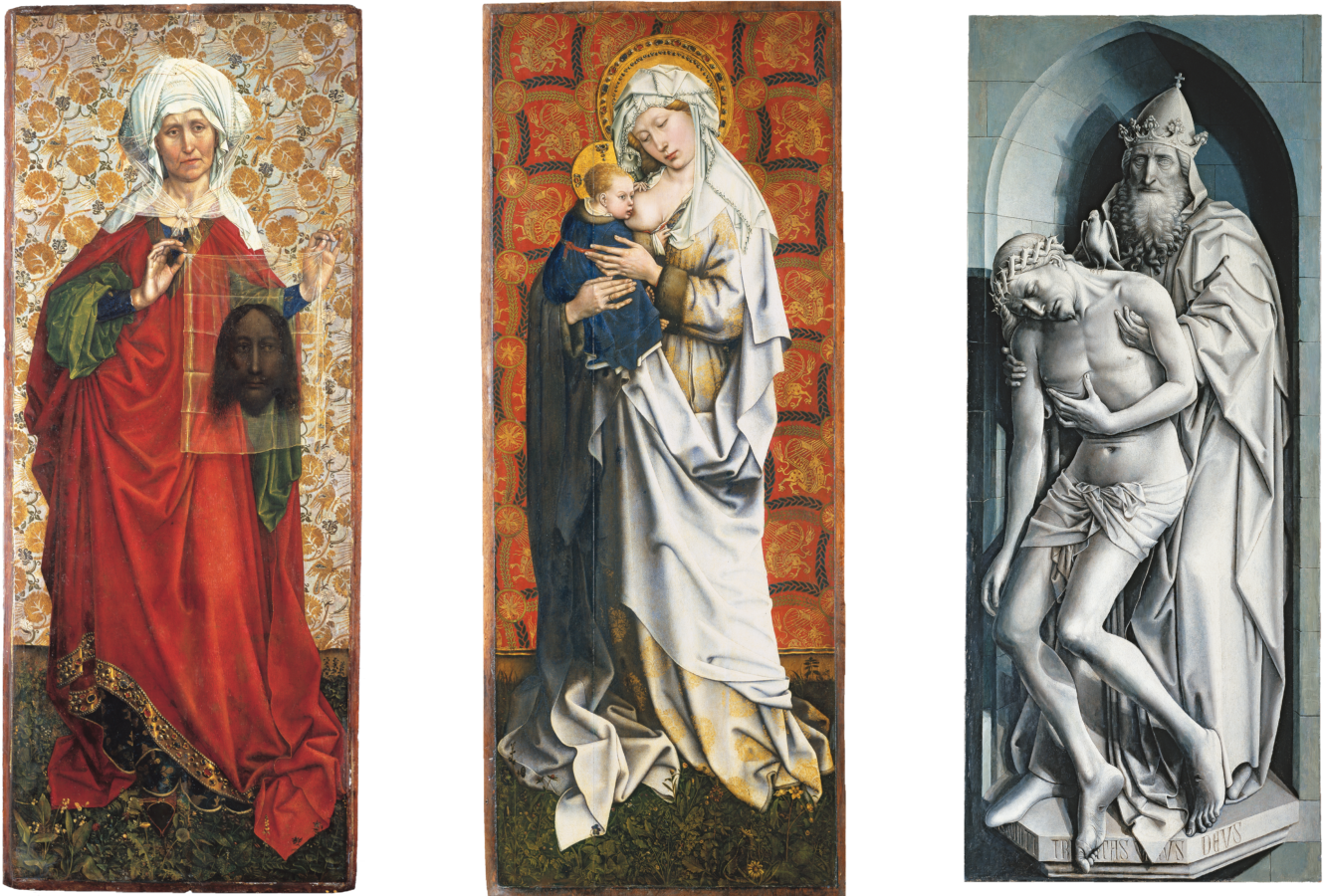
The Flémalle Panels
Master of Flémalle, ca. 1428 — 1430
Städel Museum, Frankfurt
The Flémalle panels immediately won their place in the canon of the Early Netherlandish art upon their rediscovery in the nineteenth century, despite the fact that not much was known about their origins. The panels, now believed by a majority of the experts as originating from the workshop of Robert Campin of Tournai, are considered one of the key works marking the split from the International Gothic Style and the beginning of the Early Netherlandish school of painting. The panels superbly display the qualities that characterize this school of painting, including the three-dimensionality of the figures, illusionistically rendered materials, naturalism in depicting plants, and the individualized faces of the saints, which evoke emotions and empathy. The paintings also demonstrate technical brilliance, allowing us to enjoy minutely executed details, as if viewed under a microscope, yet the overall effect of the panels show solid monumentality and impress us with their dramatic quality.
— Greta Koppel, Curator of Dutch and Flemish Paintings, Kadrioru Kunstimuuseum, Eesti Kunstimuuseum, Tallinn
Object details
The Flémalle Panels (St Veronica with the Veil, Madonna Breastfeeding, The Trinity) ca. 1428-1430
Mixed technique on panel | Inv. No. 939; 939A; 939B
160.2 x 68.2 cm (Madonna Breastfeeding)
151.8 x 61.0 (St. Veronica)
148.7 x 61.0 (The Trinity)
Städel Museum, Frankfurt am Main.
Master of Flémalle, possibly Workshop of Robert Campin
(Valenciennes ca. 1378 – 1444 Tournai)
Gallery




Explore more
Unraveling a 15th-Century Whodunit
New York Times article regarding a 2008 exhibition in Frankfurt
Read on nytimes.com